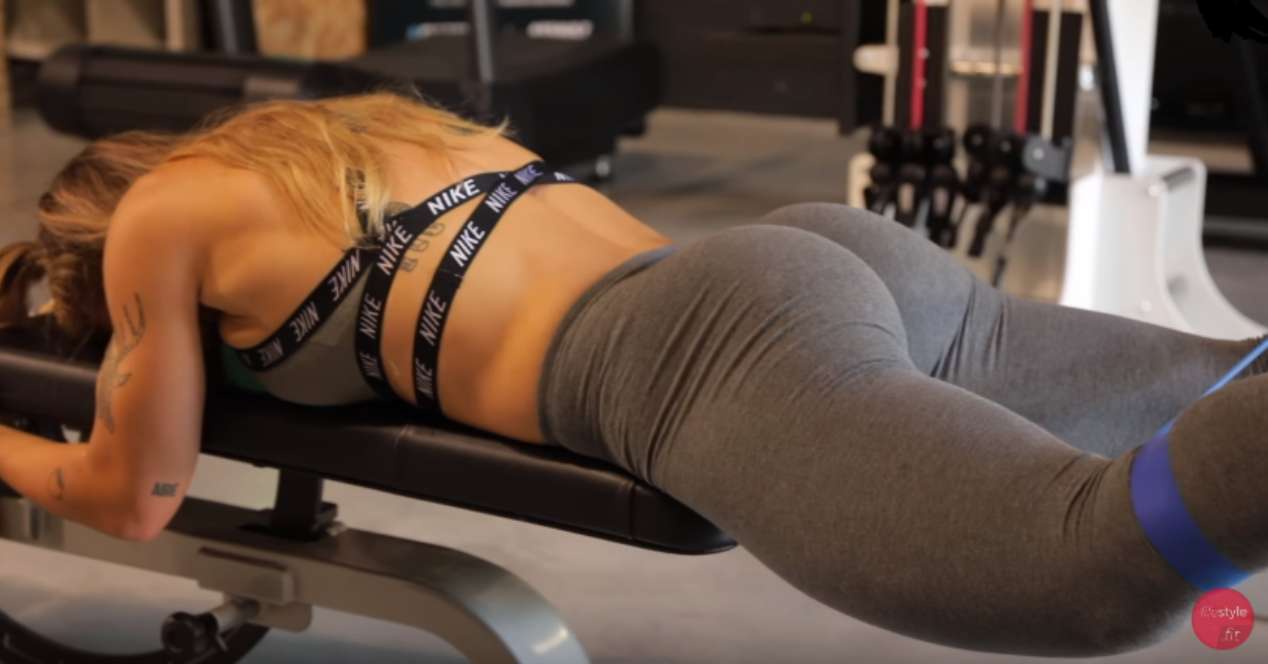
One of the biggest pieces of advice that is often given intentionally is to contract your glutes for greater core support and stability. However, it is interesting to question whether pressing the storage room is as productive as they tell us.
The human being is designed to be compatible both inside and outside, but for you to understand us better, let's play comparing our body with a suspension bridge. We will imagine that we want to drive on that bridge because all the cables that hold it are doing a correct job. The problem is that if one of those wires is too short or too long, you wouldn't want to go over that jumper, would you?
Let's say we're never sick, stressed, or injured, so we wanted the perfect suspension bridge. All our cables are properly suspended and do their job properly. But the reality is that anyone suffers from stress, injury, and dysfunction. So we will be starting from a suspension bridge with short and long cables, and we will not be able to accept certain loads.
Does squeezing the glute increase strength?
The researchers found that those who squeeze the glutes increase their hip extension strength, or glutes, by 16 percent compared to an 11 percent increase in those who do the exercises without pressing. The girth of the buttocks also increases with the contraction of the buttocks.
We may have a flat butt for a number of reasons: genetics, age, and sedentary jobs or lifestyles all play a role. Inactive butt syndrome means that the gluteal muscles lack strength and are probably not active when we do certain exercises like squats or lunges.
However, squeezing the buttocks can weaken them and make it difficult for the pelvic floor to respond when we really need it to. For a short trip, keeping your buttocks clenched is fine, but keeping them clenched all day creates a real problem, especially for sneezing.
Even so, there are people who train and have big thighs but no buttocks. The main reason why the thighs grow disproportionately larger and faster than the butt is that most so-called "butt exercises" activate the legs more strongly than the buttocks. When the legs get stronger, we tend to use the glutes less. This leads to Sleepy Buttock Syndrome, also known as hibernating buttocks.
Advantages of squeezing the gluteus
There are some benefits to squeezing your glute during workouts, beyond making it bulkier.
Dead weight
Sometimes it can be helpful to squeeze your glutes at the top of a deadlift. This is where the muscles will be most loaded, so it is important to move through the full range of motion and finish the movement.
But you still don't want to push your hips or overextend your spine. So we should not overdo it with this advice. It is not about stretching backwards, but about squeezing the gluteus up.
glute activation
If we're doing lunges or Bulgarian squats, for example, squeezing can help stabilize us. Normally, squeezing a specific area makes us pay attention to the movement. Squeeze can help bring the mind back to the body.
Clenching the muscles, particularly the gluteals, is described as a way to 'activate' or 'engage' the tissue. So if we've made sure that the technique is performed safely, without bending the spine, can we really focus the tension through the glutes?
Squatting
You can squeeze your glutes at the top of your squat, but it probably won't work as expected. There are theories that squeezing your glutes may improve post-activation potentiation, which could help you use your glutes more to come out of the bottom of the squat. That being said, there is a tendency to push the hips forward when squeezing the glutes. This can cause posterior pelvic tilt and hyperextension, which can lead to lumbar spine injury.
Many think that when tightening the butt, the goal is to produce that perfect peach of a rounded butt. However, if we walk into a weight-lifting gym and then start squeezing our glutes into squats, we'll probably want to never go back.
For some reason, squeezing the glutes seems to infuriate powerlifters to such a degree that it's actually quite scary. A powerlifter's squat will simply involve squatting down and then using every ounce of energy, strength, and muscle to get back up.

Check our posture
The first thing we have to keep in mind is that in order to repair our "bridge" we have to accept that the cables are not doing the desired job. One of the biggest mistakes is to reinforce the bridge by building structures around it, instead of focusing on repairing the original supporting cables. I hope you are understanding the analogy: we tend to obsess over increasing our buttocks, but we forget to strengthen the muscles that surround it.
Of course, before we repair anything, we should go back to the original design and restore it so that its structure is as optimal as possible. It is true that the process is longer, but it contains fewer risks and is less random.
Squeeze the gluteus in daily habits
When we squeeze our gluteus hard, we are reinforcing a dysfunction. First of all, I want to make it clear that I am not talking about engaging the glutes or the lateral rotators, which of course are meant to work properly.
I am only referring to when we lift heavy objects or when we walk, where the activation is necessary in a normal extension of the leg. That is, we work a lot in normal and natural range of motion, where our buttocks do not need to be tight.
The squeezing action is an unconscious habit stemming from core weakness, pelvic misalignment, lumbar instability, and pelvic floor weakness. So ironically, while some people try to get more stability by squeezing really hard, in the long run our lumbar discs and joints can suffer more wear and tear, along with decreased core support and an excessively tight pelvic floor.
Consider yourself, do you want a person who squeezes the gluteus when you are in line at the supermarket, brushing your teeth or walking down the street. In that case, you'll need to work to bring the original function back to your butt.
Re-educate posture
Try doing a pose to Determine if your pelvis is in front of your ankles. If you habitually put most of your weight on the front of the foot, this is your case. You should try to support the pelvis up so that it is on your ankles; when you feel the weight on your heel, contract your quadriceps to prevent yourself from falling backwards.
The normal thing is that you can maintain this position without effort, it does not require at any time to press anything, so don't trade squeezing the glute for squeezing the quadriceps. It is important that you keep the lumbar curve in its natural formIt's not about arching your back or leaning over.
You should also take into account if your abdomen is always rigid, because it could be due to excessive development. This implies that you have lost some fluidity and respiratory capacity, in addition to finding it difficult to strengthen the core and keep the transverse abdomen active.
My advice is that you don't get obsessed with continuously squeezing the gluteus, let alone doing movements that don't need to be tight.
main risk
While there's presumably nothing wrong with squeezing your glutes, you can make a big deal out of squeezing your glutes at the top of the squat.
The glutes are what are known as hip extensors. This means that when we activate the glutes we push the hips forward. However, there is a tendency for many lifters to literally push their hips forward at the top of the squat. What this does is hyperextend the lumbar spine.
In fact, we'll usually end up with a posterior pelvic tilt at the top of the movement. So your hips will be thrust forward, your lower back will be rounded, your upper body will be tilted back, and your butt will be tucked under your pelvis.
This may not cause a problem from rep to rep, but it is something that can lead to a serious lower back problem over time. The goal when squatting to keep the spine as neutral as possible and for the bar to move exactly in the same line.
So the bar should literally travel down and then up in a perfectly straight line. The spine must maintain its natural alignment throughout the movement. However, when we push our hips forward, we no longer adhere to any of these principles.
Indeed, the main concentration is no longer squeezing the glutes, but simply throwing the hips forward. We'll also see this exact same top position when many people deadlift. Once again, the hips are thrust forward right at the end of the movement, the butt tucks under the pelvis, and the lower back is hyperextended.
This is not squeezing the glutes, but simply a way to eventually wear out the discs and cause serious lower back problems for years to come.